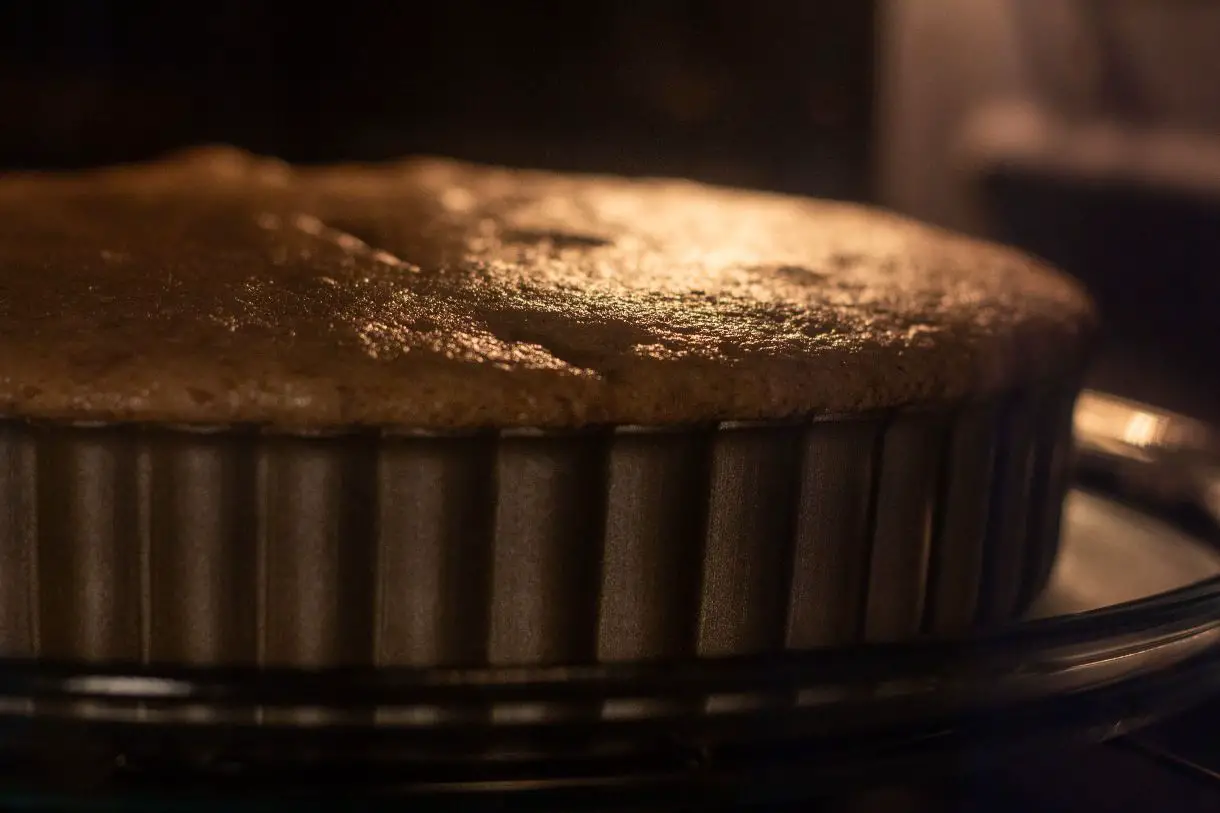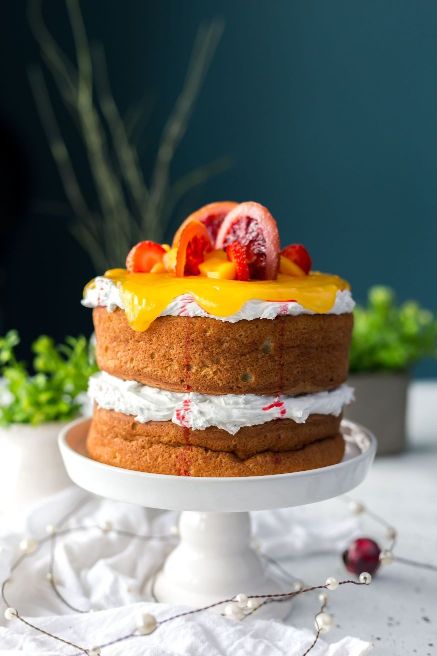Cheesecake is a delectable dessert enjoyed by many, with its creamy and rich texture that melts in your mouth.
However, one common issue that cheesecake enthusiasts often encounter is cracking.
A cracked cheesecake can be disappointing, especially after investing time and effort into creating the perfect dessert.
In this article, I’ll reveal the reasons behind what causes cheesecake to crack, along with valuable tips on how to prevent it and fix a cracked cheesecake.
So, let’s dive in!
What Causes Cheesecake to Crack – Revealed
Cheesecake, with its smooth and creamy texture, is a favorite dessert for many. However, the presence of cracks can be disappointing and frustrating.
To understand how to prevent and fix cracked cheesecakes, we must delve into the factors that contribute to this issue.
Here are 6 main causes of cracked cheesecake:
1. Insufficient Cooling Time:
After the cheesecake is baked, it is crucial to allow it enough time to cool down and set properly.
This process is essential for achieving a smooth and creamy texture. When the cooling process is rushed, such as by refrigerating or removing the cake from the pan too soon, it can lead to the development of cracks on the surface.
Cooling the cheesecake gradually at room temperature allows it to contract evenly and prevents the formation of cracks.
2. Overbaking:
Overbaking is a common mistake that can negatively impact the quality of a cheesecake.
When a cheesecake is left in the oven for too long, it tends to become excessively dry and more prone to cracking.
To avoid this, it is important to follow the recommended baking time as specified in the recipe.
Every recipe has a specific duration for baking the cheesecake to perfection, and it’s crucial to adhere to those instructions to achieve the desired moist and creamy texture.
It’s always better to slightly underbake the cheesecake than to overbake it.
3. High Oven Temperature:
The temperature at which a cheesecake is baked plays a significant role in its final outcome.
If the oven temperature is set too high, it can cause the top of the cheesecake to cook too quickly while the middle remains undercooked.
This uneven cooking can lead to cracks on the surface of the cheesecake.

To prevent this, you should bake the cheesecakes at a moderate temperature.
A moderate oven temperature ensures that the cheesecake cooks evenly from the center to the edges, resulting in a smooth and crack-free surface.
It’s important to refer to the recipe instructions for the specific temperature needed for baking the cheesecake.
4. Drastic Temperature Changes:
The delicate structure of a cheesecake can be easily affected by rapid temperature changes, which can result in cracks.
It’s important to avoid exposing the cake to extreme variations in temperature.
For instance, transferring a cheesecake directly from a hot oven to a cold countertop can cause a sudden contraction or expansion of the cake, leading to cracks.
To prevent this, allow the cheesecake to cool gradually in the oven with the door slightly ajar or on a wire rack at room temperature.
This gradual cooling process allows the cake to adjust to the temperature change more smoothly, reducing the risk of cracking.
5. Excessive Moisture:
Excess moisture can weaken the structure of a cheesecake and contribute to the development of cracks.
Care should be taken when incorporating liquid ingredients or adding toppings that may introduce extra moisture into the batter.

Liquid ingredients, such as eggs, dairy products, or flavorings, should be measured accurately and added in the specified amounts in the recipe.
If the recipe calls for toppings such as fruit compote or sauces, it’s important to ensure that they are properly drained or thickened before adding them to the cheesecake.
This helps prevent excess moisture from seeping into the cake, maintaining its structural integrity and reducing the likelihood of cracks.
6. Overmixing:
Overmixing the cheesecake batter can introduce excess air and create an unstable texture, making the cheesecake more susceptible to cracking.
To prevent this, you should mix the ingredients gently using a spatula or mixer at a low speed.
The goal is to achieve a smooth and well-incorporated batter without overworking it.
By avoiding overmixing the cheesecake can maintain its stability and reduce the risk of cracks forming during baking.
How to Prevent the Cheesecake From Cracking: 6 Effortless Steps
Here are 6 effortless steps to prevent the cheesecake from cracking:
1. Use a water bath:
A water bath helps create a moist environment in the oven, which prevents the cheesecake from drying out too quickly and cracking.
Wrap the outside of the springform pan with aluminum foil to prevent water from seeping in.
2. Gradually add ingredients:
Add ingredients like eggs and sour cream gradually, one at a time, while mixing on low speed.
This prevents the batter from getting lumpy or becoming too heavy and reduces the chances of cracks.
3. Bake at a low temperature:
Bake the cheesecake at a low temperature, typically around 325°F (160°C).
High temperatures can cause the cheesecake to bake too quickly, leading to cracks. A longer baking time at a lower temperature helps to ensure even cooking.
4. Don’t overbake:
Overbaking can cause the cheesecake to shrink and crack.
The edges of the cheesecake should be set, but the center should still have a slight jiggle when gently shaken.
Turn off the oven and let the cheesecake cool gradually inside for about an hour before transferring it to the refrigerator.
6. Cool gradually:
After removing the cheesecake from the oven, run a knife around the edges to loosen it from the pan.
Allow it to cool gradually at room temperature before refrigerating. Sudden temperature changes can also cause cracks.
7. Chill thoroughly:
Refrigerate the cheesecake for at least 4 hours, preferably overnight, to allow it to set completely.
Cooling and firming up the cheesecake helps prevent cracks.
How to Fix a Cracked Cheesecake: 5 Easy Ways
Despite our best efforts, a cheesecake may still crack occasionally. Here are 5 ways to fix a cracked cheesecake:
1. Hide the Crack with Toppings
One method to fix the crack in a cheesecake is to divert attention from it by decorating the top with enticing toppings.

This can be achieved by placing fresh fruits like berries or sliced kiwis on the surface, adding dollops of whipped cream, or giving it a light dusting of powdered sugar.
By drawing the eye towards the visually appealing toppings, the crack becomes less noticeable, and the overall presentation of the cheesecake is enhanced.
2. Patch the Crack with Cream or Ganache
To seamlessly fix a crack in a cheesecake, a smooth cream or ganache mixture can be prepared and used to fill the crevice.
This can be done by gently pouring or spreading the mixture into the crack.
To ensure a flawless appearance, an offset spatula or the back of a spoon can be used to smooth out the cream or ganache, making the crack virtually disappear.
This method not only covers the imperfection but also adds a luscious layer to the cheesecake.
3. Use Sour Cream or Yogurt Topping
Another way to fix the crack in a cheesecake is to create a delicious topping using sour cream or yogurt.
This can be achieved by preparing a mixture of either sour cream or yogurt and spreading it over the cracked surface of the cheesecake.

As the topping is applied, it effectively conceals the crack.
The sour cream or yogurt adds a tangy and creamy flavor profile to the dessert, enhancing its taste.
4. create a Decorative Fruit Design
For a visually stunning solution, fresh fruits such as strawberries or kiwis can be sliced and arranged in an artistic pattern over the cracked surface of the cheesecake.
This not only adds a touch of creativity and beauty to the dessert but also effectively camouflages the crack.
By strategically placing the fruit slices, the imperfection becomes less prominent, and the cheesecake becomes an appealing centerpiece.
5. Serve Slices with Pride
In the case of a minor crack, an alternative approach is to serve individual slices with the crack facing down.

By doing so, the smooth surface of the slice hides the crack from view.
This allows for a presentable and enjoyable serving, as the imperfection is discreetly concealed.
What Causes Cheesecake to Crack -Conclusion
Cheesecake cracking can be a frustrating experience for any baker.
By understanding the factors that contribute to this issue and implementing preventive measures, you can create a perfect, crack-free cheesecake every time.
Remember to give your cheesecake sufficient cooling time, avoid overbaking, and manage moisture and temperature carefully.
In case a crack does occur, there are several methods to fix and camouflage it such as hiding the crack with enticing toppings, patching it with cream or ganache, or using a sour cream or yogurt topping.
By creating a decorative fruit design, or serving individual slices with the crack facing down, you can transform a flawed cheesecake into a visually appealing and delicious dessert.
With these tips in mind, you can confidently create delicious cheesecakes that impress your family and friends.

